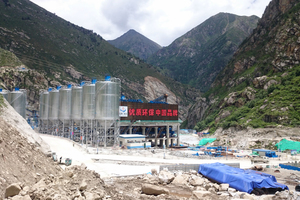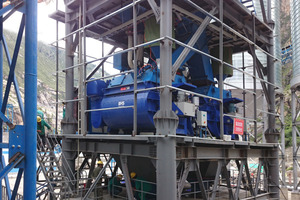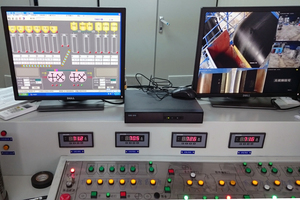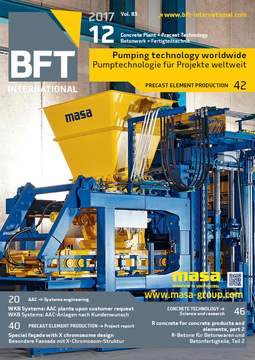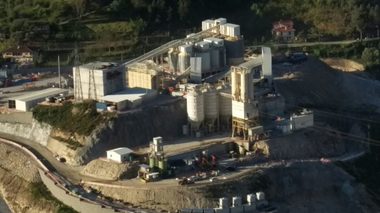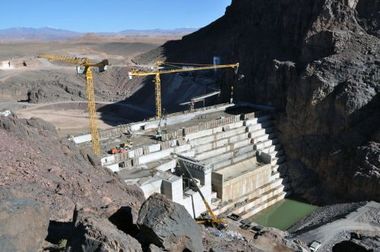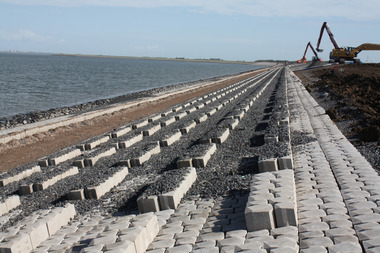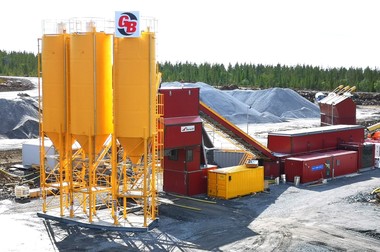Concrete mixers from Bavaria on the roof of the world
Six twin-shaft batch mixers of type DKX 6.0 delivered by BHS-Sonthofen are producing the concrete needed to build the main embankment of the Dagu hydro dam undergoing construction near the Tibetan city of Zangmu. The construction site is located 3,700 m above sea level, making this the most elevated site ever for employing mixers from BHS. BHS-Sonthofen specially modified the mixers to meet the challenges they are facing at this extreme altitude.
Once completed, the Dagu dam will be 126 m tall with a dam crest measuring 385 m. The power plant will generate 640 MW of hydro energy.
The dam is part of a major project undertaken by the Chinese government to provide the eastern parts of the Tibetan Autonomous Region with electricity, all the way to remote villages. Multiple hydro dams are damming up the Yarlung Tsangpo, the Earth’s highest river. It crosses Tibet from west to east and continues through India, where it is called Brahmaputra.
288 m³ of hardened concrete per hour
The first two mixers of type DKX 6.0 started producing the first batches of concrete on 12 July 2017. Two months later, Sinohydro No. 9 Engineering Company commissioned four more units. The mixers will produce approximately three million tons of roller compacted concrete (RCC) over the course of the dam’s construction, which is scheduled for completion in 2019. The complete facility, which comprises six mixers, is dimensioned to produce 160,000 m³ of hardened concrete per month.
The mixers are equipped with a coarse-grain mixing unit for processing grain sizes up to 160 mm, as is typical in hydro dam construction. This mixer type has proven its worth in numerous installations across the globe.
About 6 m³ of hardened concrete are discharged per batch at a rate of up to 48 cycles per hour, resulting in a total yield of up to 288 m³ of hardened concrete in one hour. The cycle times are short due to the intensive mixing of the concrete and the extra-large rotary valves at the underside of the mixing trough, which significantly speed up the discharge process.
Given the vast amount of concrete that needs to be proc-essed, BHS-Sonthofen reinforced the mixing troughs with a tougher version of its 28 mm ‘Optilong’ wear tiles. The service life of these tiles is nearly twice as long as the diamond-shaped tiles commonly used in construction projects. The variable hardness of the tile rows ensures uniform abrasion across all wear zones.
Production 3,700 m above sea level
BHS-Sonthofen even accounted for the remote location of the construction site: In order to prepare the machines for a potentially unstable grid, the company used special motor couplings. The hydrodynamic turbo couplings reduce mechanical as well as electrical load peaks. Thanks to this property, they have proven ideal for use in locations with critical grid fluctuations.
In addition, since high-altitude air does not extract as much heat from the electric motors, BHS-Sonthofen equipped the mixers with special motors that feature type ‘H’ insulation.
The sheer remoteness of the construction site posed yet another challenge. The construction site in Tibet is nearly 4,000 km from Tianjin near Beijing, which is where BHS-Sonthofen’s Chinese subsidiary is situated. It took 20 days to transport the mixers across this distance.

